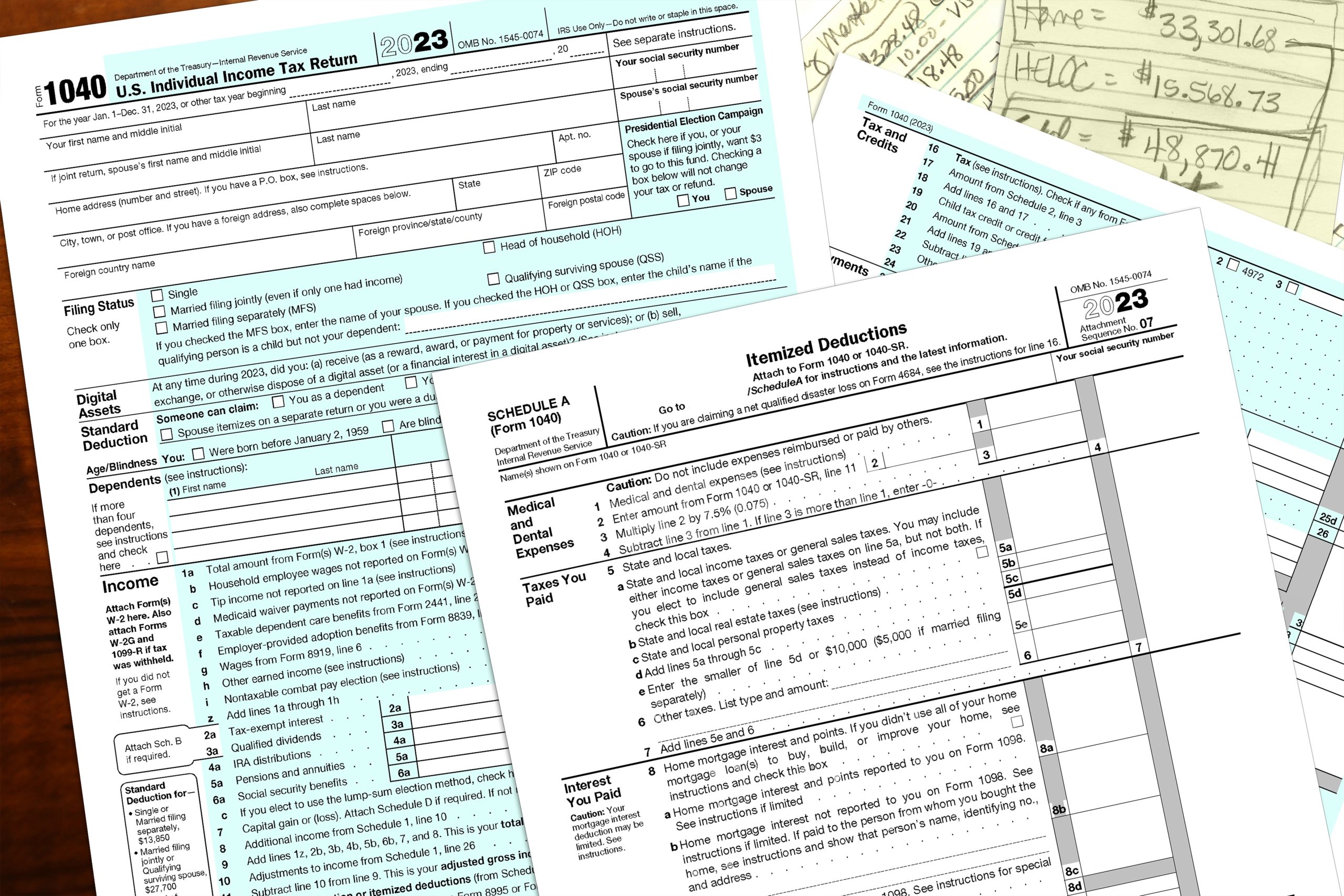Tax credits and deductions – they’re terms you’ve probably heard thrown around a lot, especially around tax season. If you’re like us, there was a time when they just blended into the background noise of financial jargon. But here’s the thing: when we took the time to actually understand them, it was like turning on a light in a dimly lit room. Suddenly, things made a lot more sense.
So, let’s go over deductions and credits in a way that makes sense. Hopefully, by the time we’re done, you’ll understand the difference between credits and deductions, how they work, and how they can save you money on your tax bill.
The Basics

To really grasp how tax credits and deductions differ, we first need to nail down what each one actually is.
Tax Credits: Think of tax credits as direct reductions to your tax bill. They’re straightforward – if you owe taxes, credits can directly subtract from the amount.
Tax Deductions: Tax deductions are a bit more subtle. They reduce the amount of your income that’s subject to tax. It’s not about directly slicing down what you owe but about lowering the base your tax is calculated on.
In both cases, the end goal is similar – to reduce your tax bill – but the way they help you get there is different.
In short, just remember: Tax credits lower your tax bill directly, and tax deductions lower the amount of income you’re taxed on.
Tax Credits: Beyond the Basics
Now, you should have a basic understanding of both tax credits and deductions and how each works. Next, we’ll explore the various types of tax credits, look at an example to understand their impact, and talk about how to claim your tax credits.
The Direct Impact of Tax Credits

Tax credits are like those unexpected windfalls in life – finding money in a jacket you haven’t worn in ages or getting an unexpected rebate on a purchase. They have a way of making your day just a bit brighter, especially when dealing with taxes.
The way they work is beautifully simple: they directly reduce the amount of tax you owe, dollar for dollar. It’s as if the IRS is giving you a direct discount on your tax bill.
Picture this:
You’ve done your calculations – at your kitchen table, papers are scattered everywhere, you haven’t slept in 2 days, and you’re drinking cold coffee – and you’ve found that you owe the IRS $1,500 in taxes. Then you apply a $200 tax credit and, just like that, your tax bill drops to $1,300.
It’s an immediate relief, a direct reduction that’s both straightforward and satisfying.
Types of Tax Credits
Now, tax credits aren’t a one-size-fits-all deal. They come in different types, each with its unique impact on your tax situation.
Non-refundable Credits: These are like those coupons you use at the store that give you a discount up to the purchase amount but don’t give you cash back. If your tax bill is $1,000 and you have a $1,200 non-refundable credit, your tax bill goes down to zero, but you don’t get the excess $200 back.
Refundable Credits: These are the rare gems. They’re like a store promotion where you spend less than the promotion amount and get cash back. If your tax bill is $1,000 but your refundable credit is $1,200, you actually get a refund of $200.
Partially Refundable Credits: As the name implies, they’re a mix. A part of the credit can bring your tax liability down to zero, and the remaining part is refunded to you.
Common Tax Credits
There are several tax credits that you might come across, each designed for specific situations:
Child Tax Credit: A boon for parents, helping to ease the financial burden of raising kids.
Education Credits: For those pursuing higher education, these can be a significant help.
Earned Income Tax Credit (EITC): Tailored for low-to-moderate-income workers, this credit can make a substantial difference, especially for families with children.
Each credit comes with its own set of rules and qualifications, so it’s worth doing a bit of research or consulting a tax professional to see if you qualify.
Claiming Tax Credits
Claiming tax credits isn’t like a treasure hunt where you’re left guessing. The IRS provides clear guidelines on how to claim each credit. Generally, you’ll find a specific line on your tax return to claim each credit, along with instructions in the tax forms or the IRS website. Now, make sure you get this part right, because missing out on a credit is like leaving money sitting on the table.
Understanding tax credits is all about knowing what’s out there and how it applies to you. In the next section, we’ll explore the other side of this coin: tax deductions.
Tax Deductions: Digging Deeper

Tax deductions might not be as straightforward as credits, but they’ve got a quiet way of making a big difference in your tax bill all the same.
The Direct Impact of Deductions
Simply put, deductions reduce your taxable income. It’s like telling the IRS, “I spent money on things that matter, so let’s not count that as income, okay?”
For example:
Imagine you have a yearly income of $50,000. You’re single, so the IRS has its eyes on this amount for tax purposes. Now, let’s bring in deductions.
Your Income: $50,000
Standard Deduction for Single Filer (for 2023): $13,850
Here’s how the deduction changes things:
Taxable Income without Deduction: $50,000
Taxable Income with Standard Deduction: $50,000 – $13,850 = $36,150
So, instead of taxing you on the full $50,000, the IRS is now looking at just $36,150.
How This Affects Your Tax Bill
Let’s say the tax rate for your income bracket is 22%. Here’s the difference the deduction makes:
Taxes without Deduction: 22% of $50,000 = $11,000
Taxes with Standard Deduction: 22% of $36,150 = $7,953
By applying the standard deduction, you’ve effectively reduced your tax bill from $11,000 to $7,953. That’s a saving of $3,047.
Claiming: Standard vs. Itemized Deductions

Choosing between the standard deduction or itemizing your deductions is like deciding whether to take a fixed discount or to tally up individual coupons. If your itemized deductions (like mortgage interest, charitable donations, and medical expenses) total more than the standard deduction amount, then itemizing saves you more money.
For the 2023 tax year, the standard deduction amounts are:
$13,850 for single filers and married individuals filing separately
$20,800 for heads of households
$27,700 for married couples filing jointly
It’s worth doing some math to figure out if your itemized deductions exceed these amounts. If they do, itemizing could be the more beneficial option. However, if your total itemized deductions are less than your standard deduction, then taking the standard deduction is the way to go.
The Takeaway
And that just about wraps up our foray into tax credits and deductions! Hopefully, this has helped clear up some confusion and helped you understand how to use them to your advantage. As we all gear up for the next tax season, keep these points in mind – they might just save you some money.
And if you ever feel a bit out of your depth – don’t sweat it. FileSmart is around to lend a hand and make this whole tax thing a lot less intimidating. As a FileSmart member, you get to ask our tax pros 5 questions every month. Here’s to tackling this year’s taxes with ease!































0